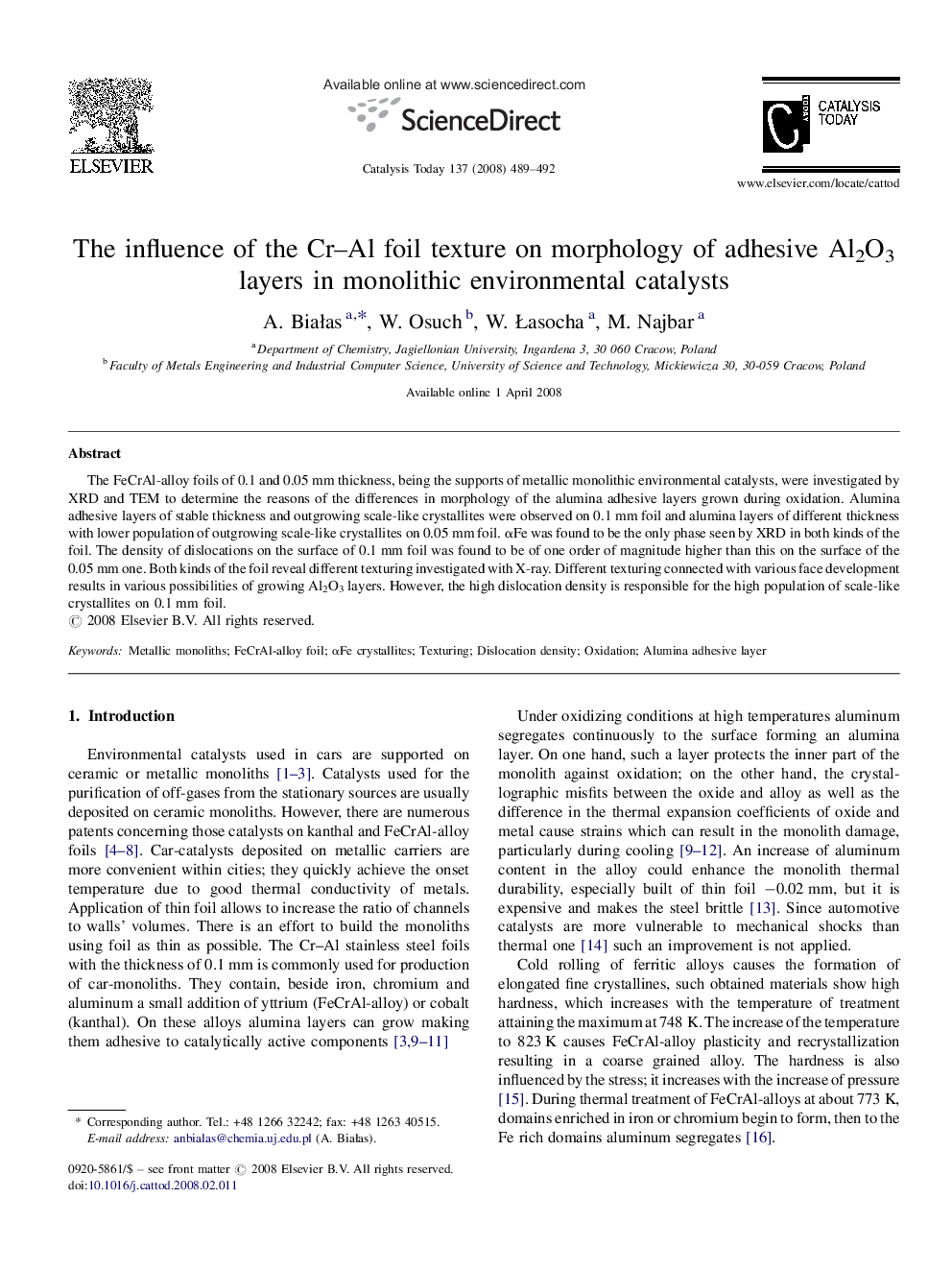| Article ID | Journal | Published Year | Pages | File Type |
|---|---|---|---|---|
| 57560 | Catalysis Today | 2008 | 4 Pages |
The FeCrAl-alloy foils of 0.1 and 0.05 mm thickness, being the supports of metallic monolithic environmental catalysts, were investigated by XRD and TEM to determine the reasons of the differences in morphology of the alumina adhesive layers grown during oxidation. Alumina adhesive layers of stable thickness and outgrowing scale-like crystallites were observed on 0.1 mm foil and alumina layers of different thickness with lower population of outgrowing scale-like crystallites on 0.05 mm foil. αFe was found to be the only phase seen by XRD in both kinds of the foil. The density of dislocations on the surface of 0.1 mm foil was found to be of one order of magnitude higher than this on the surface of the 0.05 mm one. Both kinds of the foil reveal different texturing investigated with X-ray. Different texturing connected with various face development results in various possibilities of growing Al2O3 layers. However, the high dislocation density is responsible for the high population of scale-like crystallites on 0.1 mm foil.
